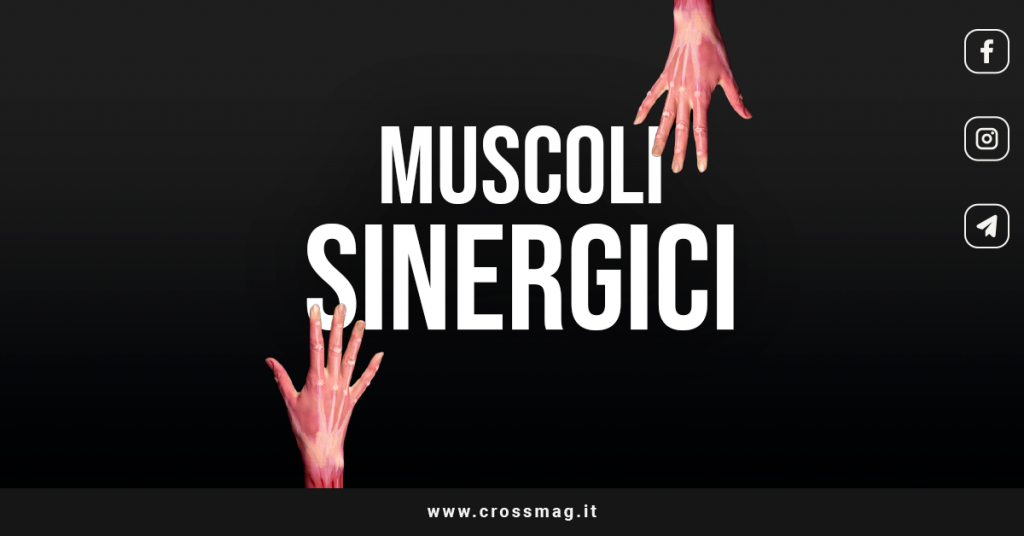When you wantand deepen the study of muscles and their actions, it is good to remember that our body works as a whole organism; even though we learn the actions of individual muscles, in actual movement no muscle works alone.
While a major muscle often performs an action, it is almost always assisted by other muscles; to maintain balance in the body, there is a muscle that assists, resists or opposes any action.
This is where synergistic muscles come into play; let's find out everything there is to know about this complex and fascinating muscular mechanism!
Index
A premise: agonist and antagonist muscles
Il The main muscle that performs an action is called an agonist, or main engine; many body actions have a muscle that is responsible for more of the work of that action than any other muscle.
For example, the hip flexion agonist is the iliopsoas; even if he doesn't work alone, the iliopsoas does a greater job of hip flexion than the other assisting muscles.
To maintain the balance of tension in a joint, there are also some muscles that oppose the movements; the main muscle that opposes the movement is called the antagonist.
Il gluteus maximus is the antagonist of the primary hip flexor, the iliopsoas, because the gluteus maximus is a hip extensor. The collaboration in the motor action between agonist and antagonist muscles functionally defines the synergistic muscles.
Synergistic muscles, what are they?
I muscles that work together to create a movement are referred to as synergistic; for example the iliacus, psoas, and rectus femoris may act to flex the hip joint.
There are certain sections within other muscles that can contribute to flexion of the hip joint; for example, the gluteus minimus and gluteus medius may contribute to flexion at the hip joint.
The set of these movements can be defined as a synergism for the flexion of the hip joint. The definition of synergistic muscle becomes clearer if we think of the etymological root, synergy: a combined and contemporary action, characterized by the collaboration and cooperation of several elements in the same activity, to achieve a single result.
Synergistic muscles work together to create a movement, cooperate in maintaining a certain skeletal attitude and in performing complex movements.
Stabilizer muscles
The major motor muscles work more productively if strong stabilizer muscles are involved; these muscles contract, especially isometrically, for stabilize a joint, in order to allow the correct movement of other parts of the body.
A weak stabilizer muscle makes it more difficult to contract the main motor muscles; Weak, underdeveloped stabilizer muscles reduce the activity of the major motor muscles, making athletic performance more difficult.
In conclusion
In real life, outside of the anatomical position, we move our body in all the most interesting and creative ways; although the main muscle, or agonist, performing the action is required, our body has a good support system for every action, thanks to the use of synergistic muscles.
In the same way, The body has a system for maintaining proper tension in a joint by balancing the work of an agonist muscle with its antagonist.
The balance between a muscle agonist, its synergists and its antagonists is important for healthy movement and for avoiding pain and injury.
And you, did you know about synergistic muscles? Let us know in the comments and remember to follow us on our telegram channel
SUBSCRIBE HERE TO THE TELEGRAM CHANNEL

